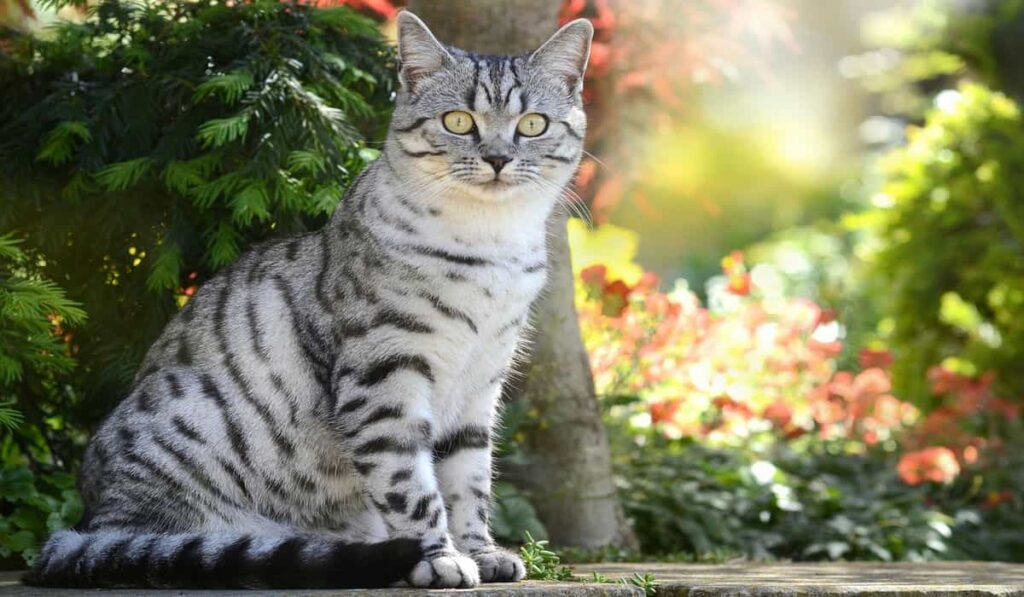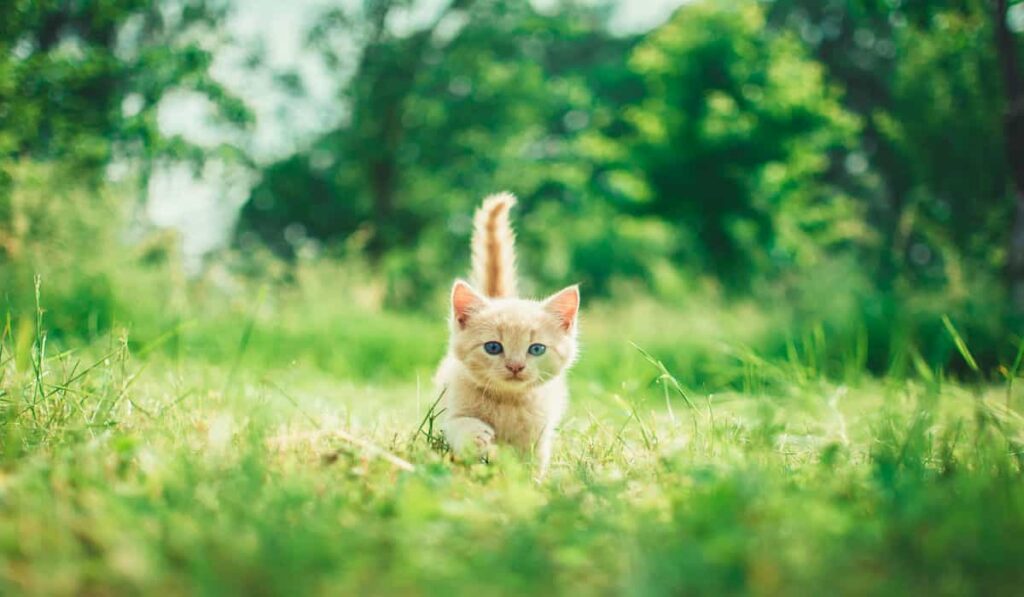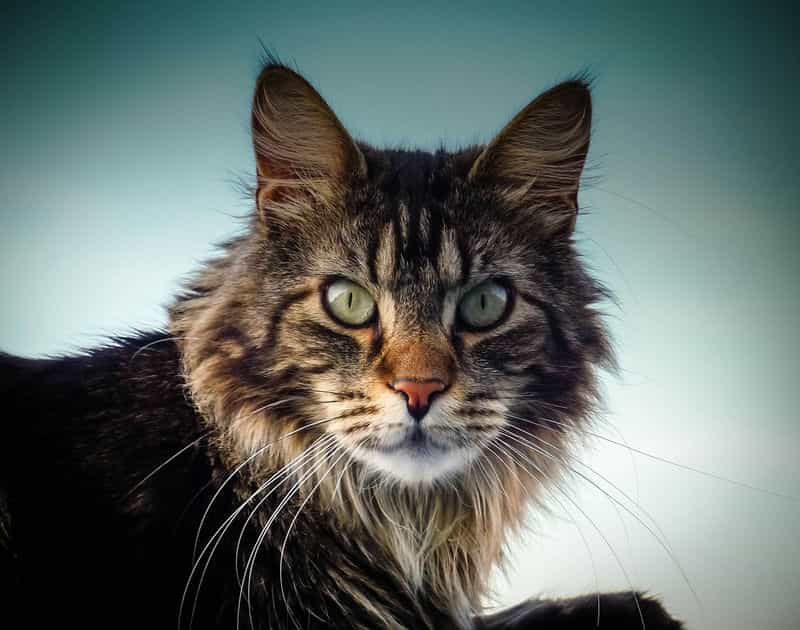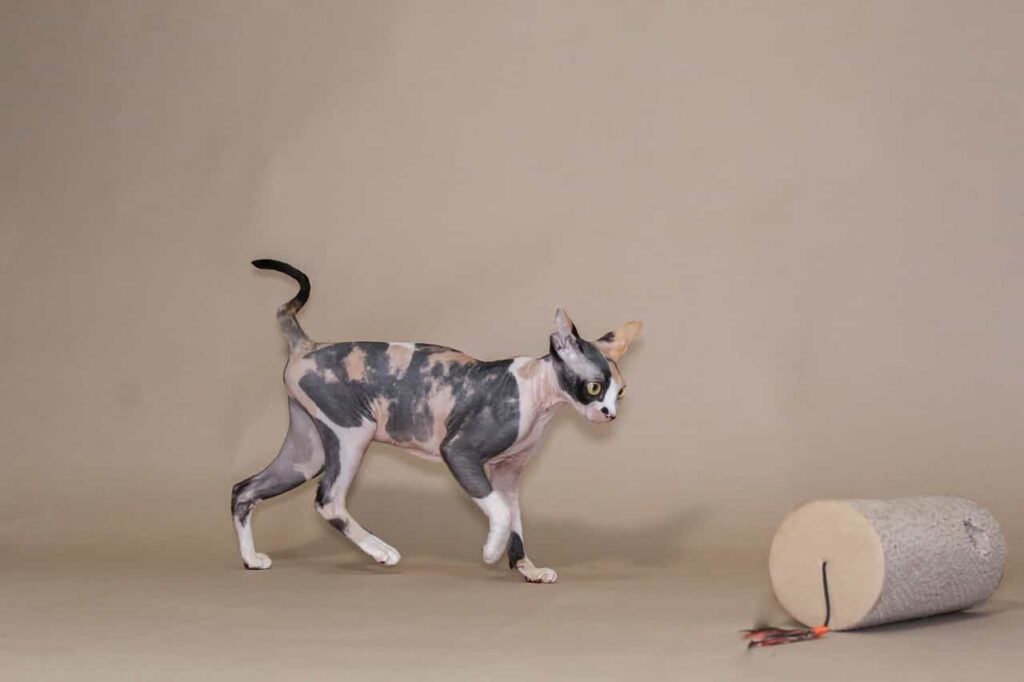The Tonkinese cat breed is the result of a mixture of Siamese cats and Burmese cats. If you love the beauty of Siamese cats but can’t tolerate their extreme vocalizing or you want both Siamese and Burmese cats but can’t keep 2 cats together then Tonkinese cats are the best choice. The Tonkinese cat breed has a pointed coat pattern in a variety of colors.
The breed- Tonkinese has foundation-like Siamese and Burmese colors pointed with White and Solid (Sepia). The short-haired coat pattern is more known to people but there is a semi-long coat pattern which is called Tibetian is more popular in the Netherlands, Germany, Belgium, Luxemburg, and France.
The sweet, sturdy, and muted-colored car breed Tonkinese has a chirp-like voice. They also love to talk but their talking is not as noisy as their ancestor Siamese cats.
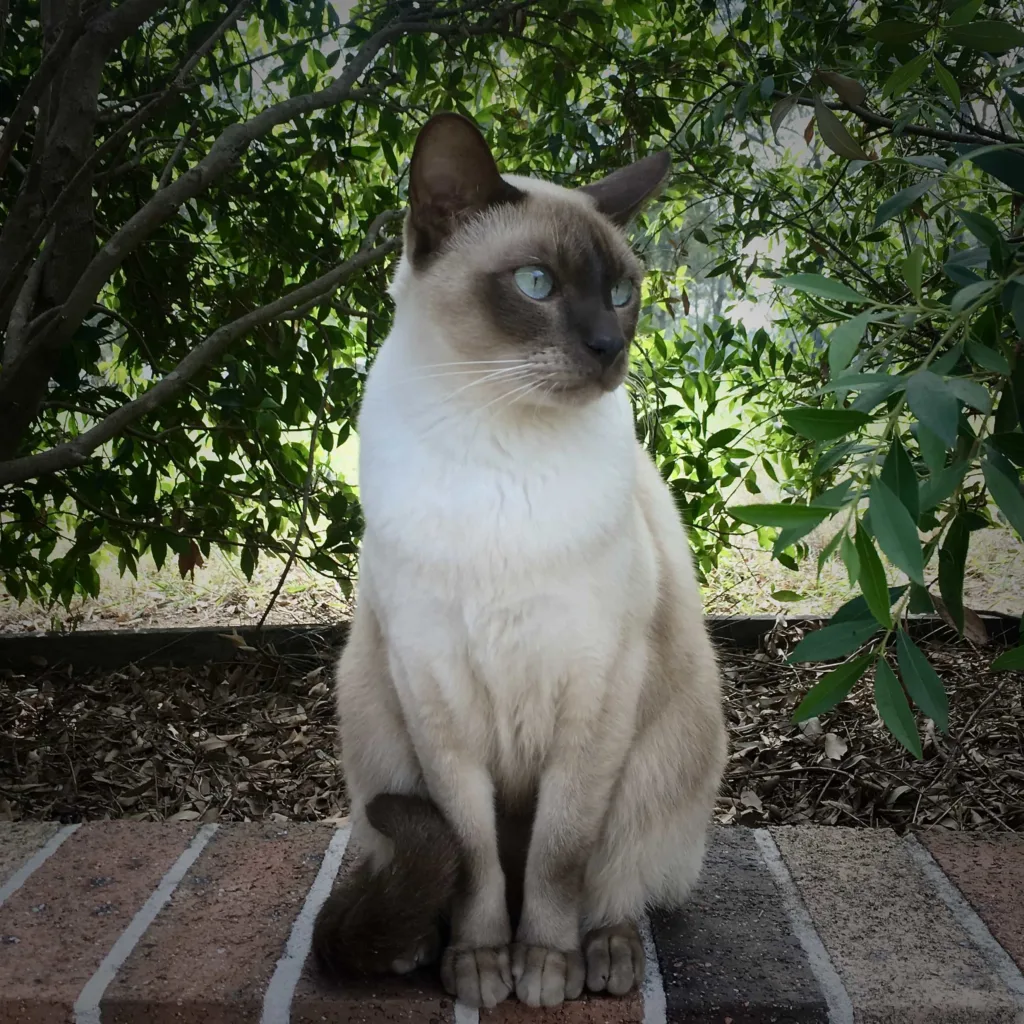

Table of contents
About the Tonkinese kittens
The Tonkinese cat breed is so popular that their kittens are booked in the breeder’s office even before their take birth. There is no need to give any ad for the sale of Tonk kittens. So you have to wait patiently to purchase a Tokinese kitten.
After purchasing you have to train the vulnerable kittens to make them sociable and cope with biting. I would recommend you to read a Happy cat handbook to learn the caring and grooming of kittens. It is a big responsibility. So you must take the help of the breeder and your veterinarian.
The Breed specialty of the Tonkinese cat
Other names:
Tonk, and Tibetan cats.
Temperament and characteristics:
Intelligent, active, vocal, playful, curious, friendly, sociable, affectionate, bold, loving, gracious, inquisitive, and people-oriented.
Body size:
Medium
Body height:
Up to 10 inches
Body length:
Up to 28 inches
Body weight:
Up to 12 pounds
Coat length:
Short and semi-long
Coat colors:
Natural or medium Brown, Champagne, Blue, Platinum, Red, Cream, Caramel, Apricot, Tortoiseshell, Cinnamon, and Fawn.
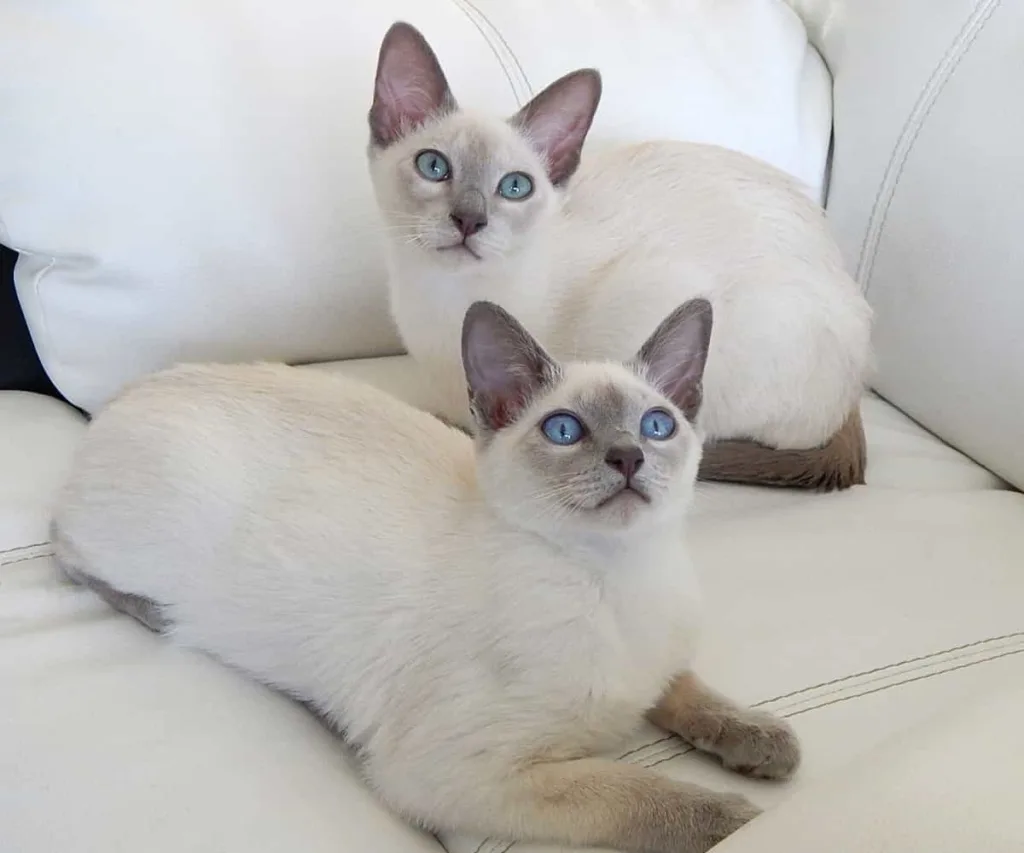

Coat patterns:
Colorpoint, Solid, and Mink.
Eye colors:
Blue, Gold, and Green.
Friendliness to children, strangers, and other pets:
Very good
Grooming and other requirements:
Low
Vocalizing:
Frequent but not noisy
Shedding amount:
Medium and occasional
Life circle:
Generally, 16 years but can be 20 years in some cases.
Origin:
USA
Origin of the breed- Tonkinese cat
The Tonkinese cat breed came with a through of the Siamese and Burmese cat breeders. They wanted a cat that look like the Siamese cats but have a mellow personality and vocalizing. The first Tonkinese arrived in the USA in 1930. It was a poor-quality female Siamese cat, named Wong Mau.
A retired Navy Doctor Joseph Thomson imported Wong Mau from Burma (Myanmar). The breeders considered it a poor-quality Siamese cat. But Wong Mau was the mother cat of the Tonkinise and Burmese cat breed. The gene testing determined that Wong Mau was the cross between A Burmese and a Siamese cat.
The first breeding program of Tonkenise cats was conducted in 1950. The first breeder of Tonkinese cats was Milan Greer. Milan left the breeding program later but other breeders were interested in the breeding of Tonkinese cats.
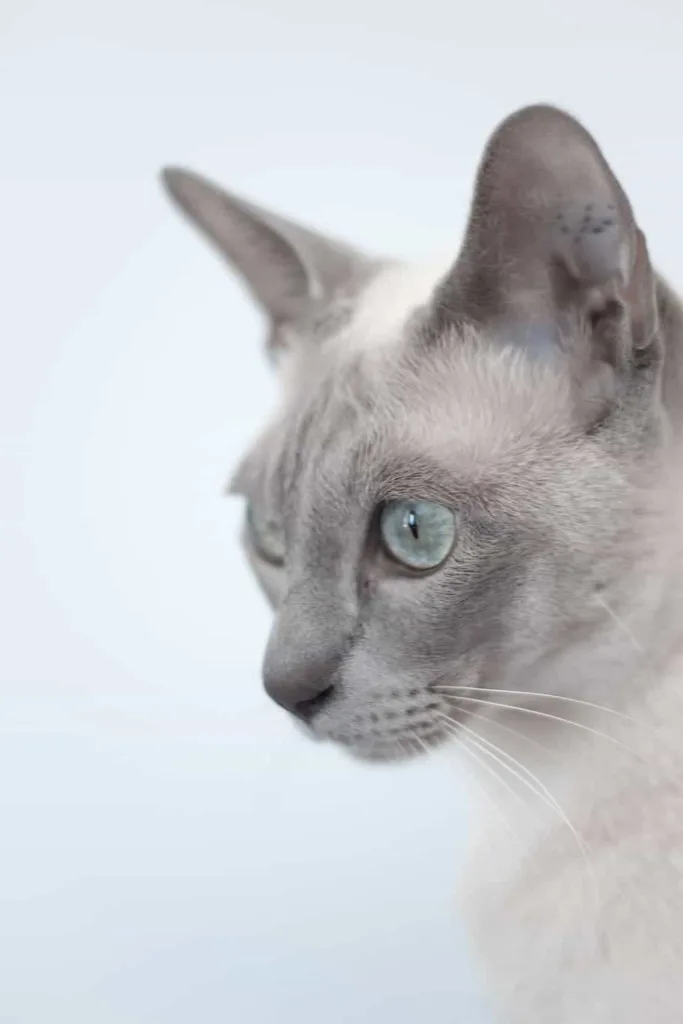

More about Tonkinese cat Origin
The prominent breeders were Jane Barletta from New Jersey, USA and another was Margaret Conroy from Ontario, Canada. They crossed the Siamese cats and Burmese cats. Their aim was to create an ideal combination of Siamese cats and Burmese cats. The name ‘Tonkinese’ referred to the Tonkin region of Indochina (Vietnam) though the breed doesn’t have any connection with this region. On the western side, the Tonkinese kittens above 6 months are considered ‘small cats’, not kittens.
The Cat Fancier’s Association (CFA) recognized Tonkinese cats in 1979, and the breed championship status in 1980. The Tonkines cat breed is recognized by The Cat Fancier’s Association (TICA|), the Australian Cat Federation (ACF), the Canadian Cat Association (CCF), and others. The Tonkene breed was moved to the crossbred classification in 2001. When the breed was firmly established, outcrossing to Siamese and Burmese cats were discontinued by the cat associations.
The appearance of the Tonkinese cat
The Tonkinese cats are medium-sized cats with slender, long, and macular bodies. The breed is considered the intermediate form of the slender and long-bodied Siamese breed more cobby British Burmese, and substantial American Burmese. Like their Burmese ancestors, they are heavier than they look.
Then tails and legs are proportionate to the body and thin. The paws are oval. They have gently rounded and wedge-shaped heads with blunted muzzles. Their eyes are Almond-shaped. The eye-colores are Blue, Gold, and Green. The ears are medium-sized, pointed, and set at the corners of the head. The original Tonkinese breed standard is according to their mother cat Wong Mau.
The Tonkinese cat coat colors
The Tonkinese cats are a colorpoint breed. The bodies have a lighter color and the face, legs, paws, and tails have darker colors. The main colors are- Natural or medium Brown, Champagne, Blue, and Platinum. The European Cat Associations also accept Red, Cream, Caramel, Apricot, Tortoiseshell, Cinnamon, and Fawn.
The Tonkines coat patterns:
The Tonkines cats have 3 coat patterns-
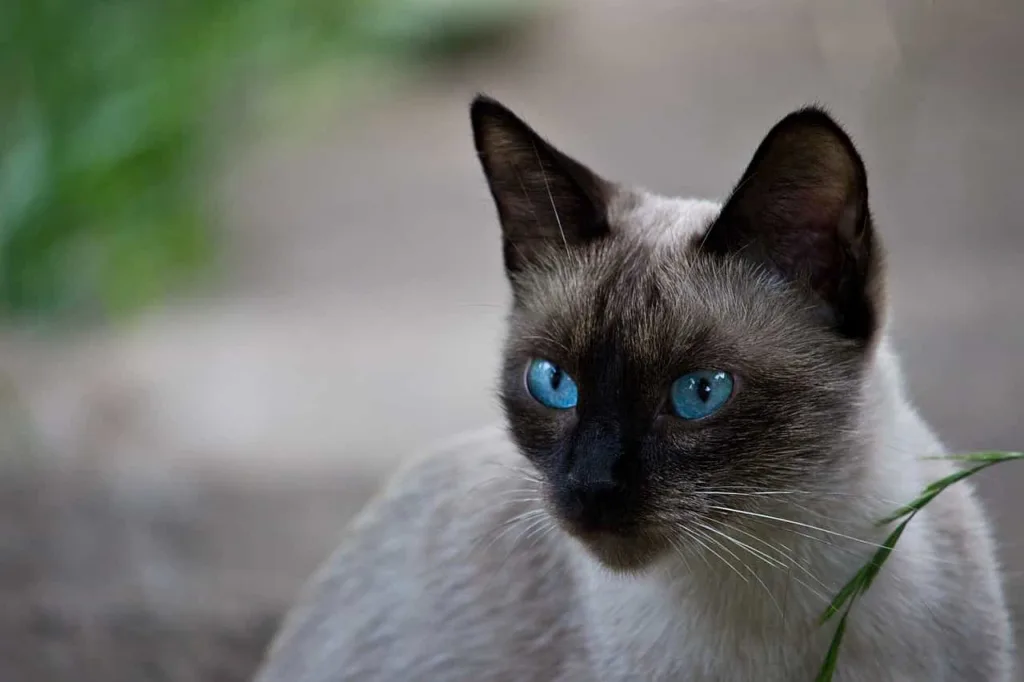

Colorpoint pattern:
It is the Siamese pattern. The light and dark shaded of Chocolate colors on the body with the Blue eyes.
Mink pattern:
Mink means the subtle points base on their main color and the eyes are Aqua-colored in a mink pattern.
Solid pattern:
Solid means any one color is dominating throughout the body. In this pattern, the eyes are Green and gold colored.The Blue Tonkines cats VS the Bluepoint Tonkinese cats: Blue point Tonkinese cats means a light and dark color version on the body when the body has light Blue color and the face, legs, paws, and tails have a darker shed of Blue color.
Blue Tonkinese means a slate-grey color all over the body and a pale-creamy grey body. Blue-Mink Tonkines means slate-grey points with a medium-grey body.
Temperament and nature of the Tonkinese cat breed
Don’t be afraid of the presence of Siamese cats in the genus. The Tonkinese did not adopt the cool temper from their wayward ancestors. But kindliness and friendliness in them are more than enough. The Tonkines are very calm, attentive, benevolent cats and very perfectly fit in your family.
They will obey the rules of the new house and will help their owners in all affairs. These are real mini-companions. The most interesting fact about the Tonkinese cat is they observe a person and try to participate and all his affairs. But at the same time, they are absolutely devoid of obsession and touchiness.
Thinly feeling the mood of the leader, Tonkinese will get confused under his feet during the period of irritation but will observe from afar and will come only at the right time. They get well along with the children, even very young ones, and patiently endure children’s whims but if the child hurts them, they will run away and will continue hiding.
Nature of the Tonkinese cat
Tonkinese cat prefer to be friends with relatives and dogs too. With smaller creatures such as birds and rodents, they will if they grew up with small animals. However, they don’t have any hunting extinct but if they want to play with tiny mice, they can injure the tiny ones. So, don’t take the risk.
They love to communicate with people using sounds but they do it quietly, without annoying with unrestrained meowing for many hours. Loneliness for them is a time of longing and sadness. They will not tear furniture and destroy everything around them in protest but they will refuse games and food, lie down on the windowsill and wait for their beloved person just like the humans.
If you do a full-time job and stay away from home for long hours, get not one but two Tonks together. The Tonks are the very best from both breeds that created them. They are energetic and mobile like the Siamese but more silent and obedient like the Burmese cats. A gentle and loyal always tries to stay close to the owner. They want to get into their owner’s arms and like to sleep with people.
Do Tonkinese cats like kids and other pets?
Well, Tonkinese cats are very sociable and people-oriented. They like to stay in peace with the kids and other pets even the toddlers. But if the children and pets hurt them, then they run away and maintain a distance from them until they remember the hurt. The Tonks is also friendly with the small animals if they grew up with small animals.
Do the Tonkinese cats love to go outside?
The Tonkinese cats are allowed to go outside. It is up to you whether you allow them to go or not. Most of the cats are fond of going outside for an adventure. The Tonkinese also like to hunt and observe nature. Some people think that roaming cats are a threat to the local small animals but it is very important to go outside daily for some time to keep the cats healthy and fit.
Caring, grooming, exercise, and training tips for the Tonkinese cat
Caring:
You probably know that the Tonkinese cats are very active, energetic, curious, playful, affectionate, and people-oriented cats. So, you must provide the opportunity to play. Provide with them various interactive toys, toy mice, cat trees, a shelf, and a big window so that they can watch the outside view.
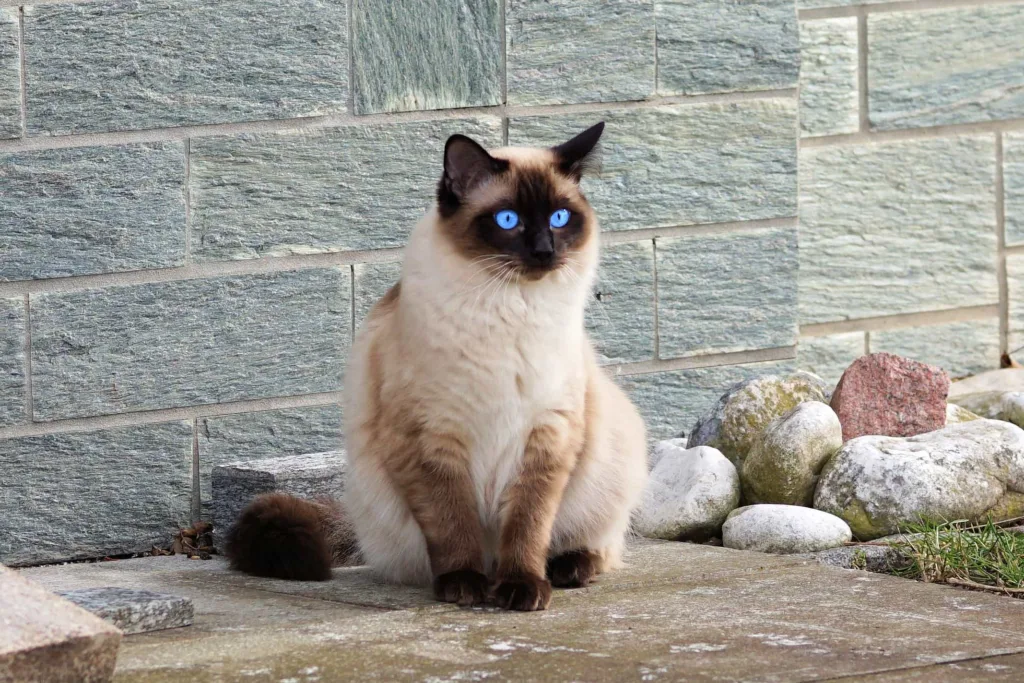

The Tonkinese can’t stay alone. So. either you have to fix the family schedule to accompany the cat or you have to keep 2 Tonls together so that they can play and accompany each other. Most of the cats are fond of going for some time daily. So, leave your cat outside daily to hang around. It is very important for their physical and mental health.
Tonkinese cat Grooming
The Tonkinese cats are very unpretentious to groom. They don’t have any undercoats, molting does not bother neither humans nor animals. It is enough to remove sparse changing hair from a pet’s body with wet hands. But you also can brush their coats weekly one time.
For skin massage this procedure, if the Tonk loves it, you can do it once a week. But this must be done carefully, with a brush with a soft hairy base so that their delicate skin does not get damaged.
Best grooming brush for adorable Tonkinese cats:
The Tonkines cats love their coats to be brushed. A rubber grooming paddle brush from Pixicco can be an ideal brush for them. So, they deserve the cost of buying a Pixixco coat brush for them. Regular oral care is very important for all cats. so, brush your Tonk’s teeth daily and check weekly for a healthy mouth. The Tonkinese cats are very prone to periodontal disease.
Tonkinese cat Exercise and training
The Tonkinese is a super active cat breed. Their playing is their exercise. So, spare some time daily to play with them. You also can provide food puzzles, cat teasers, toy mice, etc for their brain and body exercise. Training is equally important for all cats. Make them patient and sociable, listen to your commands, respond by calling their names, and most important potty training are important for your Tonkinese cat.
Living needs of the Tonkinese cat
The Tonkinese cats are very affectionate, active, playful, and curious cats. They need a lot of attention, time, and love. So, fix a family schedule to play and accompany them. Provide their favorite toys, cat trees and shelves, and a high and big window so that they can observe the birds and the outer world.
The Tonkinse are not noisy cats but chatty. They love to tell about the day to their beloved person. So, spend some time with them. Take them to your lap so that they can cuddle and snuggle up. You should let them out for an adventure daily. It will keep them both mentally and physically healthy and happy.
Health and problems of the Tonkines cat
Like other cat breeds the Tonkinese cats are prone to some health issues. Those are-
- Dental and gum problems:
A very common problem among cats. You must take very good care of your cat’s periodontal health. Otherwise, the germ will destroy the gums and teeth. The signs of dental problems are- Bad breath, drooling, intense pawing on the teeth, lack of eating and weight loss, bleeding from the gums, and teeth discoloration.
- Amyloidosis:
It is the condition of organ malfunction. There is a protein in our bodies, named Amyloid. When the Amyloid deposits vary in organs of the body and show signs, it is called Amyloidosis. The signs of Amyloidosis are- weight loss, vomiting, Diarrhea, increased urination and thirst, and poor appetite.
- Feline Asthma:
One kind of respiratory allergy. When your Tonk face problems inhaling then it is called Feline Asthma. Other symptoms are- increased respiratory rate, open-mouth breathing, wheezing, and leatheriness.
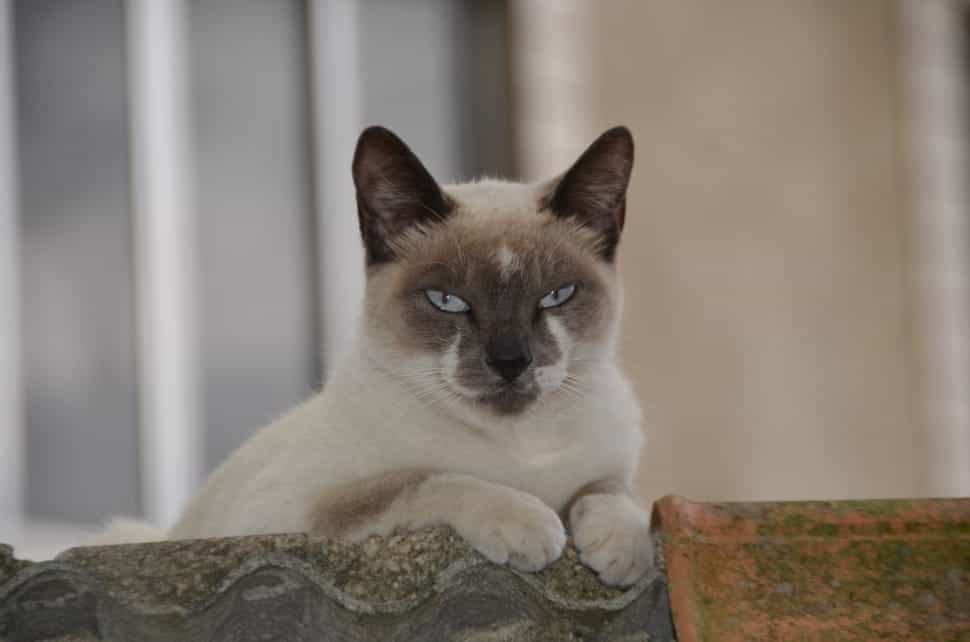

More problems of the Tonkines cat
- Hyperthyroidism:
One kind of hormone imbalance is called hyperthyroidism. It is very important to stress early the disease. If it is treated at an early stage, then hyperthyroidism is 100% curable. The symptoms are- vomiting, increased thrust, blood clots, organ failure, weight loss, and hyperactivity.
- Hypertrophic Cardio Myopathy (HCM):
One kind of heart disease. When the heart muscles get thickened and make obstacles to the function of blood pumping and circulation throughout the body, it is called HCM. a very common disease among cats. The symptoms are- open-mouth breathing, rapid breathing, and blood clots.
- Kidney problems:
There are 2 kinds of kidney problems that cats are prone to. These are- Polycystic Kidney Disease (PKD) and Bladder Stones. When small cysts grow on the kidney and make obstacles to urinating and retaining urine- it is called PKD.
There is calcium in our cat’s body. When it is deposited in the kidneys and turns into stones- it is called a Bladder stone. If the problems are not tressed at the early stage, then it can cause kidney failure. The symptoms are- the cats can’t retain the urine and urinate outside the litterbox, feels pain and inflammation while urinating, groom excessively in the genital area, and blood passes with the urine.
- Crossed eye:
A breed-related problem inherited from Siamese cats. A very funny problem for the Siamese and their descendants. But the good news is- the Tonkinese cats don’t get any problem seeing because of their crossed eyes.
- Diabetes and obesity:
These two problems are also very common in cats. Overfeeding and lack of activities are responsible for this. So, keep an eye on the feeding amount and activities of your Tonk. the symptoms of Diabetes are- frequent urination and gaining weight.
The Shedding of Tonkinese cat
The shedding amount of Tonkinese cats is very low. Their shedding doesn’t bother their families and other animals. They don’t require frequent coat brushing.
Are the Tonkinese cats Hypoallergenic?
Truly, no cats are hypoallergenic. There is a protein in a cat’s skin named Fel D1, Fel D2, Fel D3, and Fel D4. some people are allergic to proteins and objects that are shorthaired and low-grooming cats are hypoallergenic. If you and your family members have this then take time and try to know whether you people can adjust to cats or not.
The lifespan of the Tonkinese cat
15 years of lifespan is respectable for pedigree cats. The Tonkinese cats have a lifespan of almost 16 years and if you take very good care of your Tonk then you can get 2 years more as a bonus.
Note: If you purchase your Tonk from a reputed and trusted breeder then you can avoid many diseases and problems. A regular vet check-up after every 6 months is very highly recommendable. If you want to see your cat happy then keep a good eye on its health and problems.
Food and nutrition tips for the Tonkinese cat
Any cat can eat natural food but in this case, it is very difficult to organize nutritional balancing; it is necessary to use additional supplements and vitamins. I would recommend high-quality commercial food for your Tonkinesse cat. You can provide a mixture of both dry and wet food. If your cat is a poor drinker the mixture is a must to avoid dehydration and to keep the kidney in a good condition.
If you have decided to provide homemade food then do it under the supervision of the person from whom you have adopted the cat or the veterinarian.
Always use a measuring cup and kibble to feed your Tonk so that it can’t get obese. Obesity causes Diabetes. Feed according to the cat’s age, activity, and size. Provide with them plenty of fresh and clean water daily.
Some facts and myths about the Tonkinese cat
- Normally, cats give litters of a maximum of 5 kittens at a time but there was the largest litter consisting of 19 kittens was a Tonkinese cat.
- There is a close relationship between the climate temperature and Tonkinese cat’s coat colors. The coat colors are darker in cool climates and if your Tonk has taken birth and grew up in a hotter climate then its coat colors get lighter.
- The kittens of Tonkinse are born Cream-colored with no coloring and markings.
- The Tonkinse are chatty and chirpy but not as noisy as their ancestor’s Siamese cats.
- Nowadays, all outcrosses to the Tonkinese cats are discontinued.
How to identify a Tonkese cat?
When you’re ready to adopt or purchase a Tonkinese cat then it is very important to identify a real Tonkinse to avoid getting deceived. I will tell you some physical and behavioral traits of Tonkinese cats so that you can identify them very easily:
Identifying Tonkinese cat by their physical traits
- Coat colors:
They have 4 main coat colors- Natural or medium Brown, Champagne, Blue, Platinum. The European cat associations also allow the Red, Cream, Caramel, Apricot, Tortoiseshell, Cinnamon, and Fawn.
- Coat patterns:
The Tokinese cats are available in 3 coat patterns such as Colorpoint, Solid, and Mink patterns.
- The eye colors correspond to the coat colors. That means the eye colors will be Blue if the coat pattern is pointed. The eye color will be Aqua if the coat pattern is Mink, and the eye color will be green or yellow, or Yellowish Green if the coats are Solid.
- The ear shape is wide-based and rounded at the tip. The ears are always alert and in an upright position.
- The legs are slender, long, muscular, and proportionate to the body.
- The Tonks are surprisingly heavier than they seem to be.
- Their body size is moderated. That means their body size varies in area wise. Not the same in all areas.
Identifying Tonkinese cat by their temperament and personality
- The Tonkinse cats are very friendly, affectionate, sociable, and human-oriented cats.
- They are very active and playful cats. They are always up for any activity.
- They are very intelligent and curious cats.
- The Tonks are very chatty cats though are not noisy but love to chirp and talk.
Identifying Tonkinese cat by breed verification
- Talk to the veterinarian about the breed of your cat.
- Talk to the breeder and him/her questions.
- Take your vet along with you when you visit and go to meet your desired Tonkinese cat.
- Conduct a DNA test on the Tonkinese cat which you want to adopt or purchase. There are so many companies that are experts on cat DNA testing. Get their help.
The Cat Fancier’s Association (CFA) breed standard for the Tonkinese:
The International Cat Fancier’s Association (CFA) is a parent organization for cats worldwide. It was established in 1906. CFA determines a standard for all cat breeds and coat patterns. So, if you are interested to know the breed details of the Tonkinese cat then check out the website of CFA.
Cons of the Tonkinese cat
There are some cons that the Tonkinese cats have and you need to know those:
- The Tonkinese are prone to have some genetic issues.
- They can’t be left alone.
- In some cases they need a special diet.
Breed overview of the Tonkinese cat
Well the Tonkines cat breed is a mixture of Siamese cats and Burmese cats. It is a medium-sized vocal cat that can be short and semi-long coated. The semi-long variety is called Tibetian cats. The Tonkinese cat’s body’s Body height is up to 10 inches, Body length is up to 28 inches, and Body weight is up to 12 pounds.
Their Coat colors are Natural or medium Brown, Champagne, Blue, Platinum, Red, Cream, Caramel, Apricot, Tortoiseshell, Cinnamon, and Fawn. Their coat patterns are Colorpoint, Solid, and Mink and their Eye colors are Blue, Gold, and Green. A very affectionate, friendly, active, playful, and chatty cat breed is Tonkinese. It originated in the USA.
Tips for Tonkinese cat
I know that Tonkinse cats are very adorable and coveted. The buyers give a pre-booking for the kittens to have it. But you must have patience and keep some things in mind in the procedure of having or getting a Tonkese cat.
If you want to purchase a Tonkinese cat then you have to find a trusted and reputed breeder first. So, check the websites of The Cat Fancier’s Association (CFA) and Tonkinese Breed Association (TBA). they publish a list of trusted and reputable breeders. You also can go to the local cat shows to get an original Tonkinese cat without any hassle.
The Tonkinese cats are not available in rescues or shelters because they are very adorable and coveted. But maybe any Tonk cat suddenly needs a new owner because of its owner’s death, finacial crisis, or any other problems. So, you can check out shelters and rescues.
The shelters are such as adopt-pet-com, and petfinder.com.
The rescues are-
the USA- Michigan Tonkinse Rescue, Tonkinse Rescue, and Retired.
The UK- Ramesis Cats, Tonkinese Rescue.
Australia: Annie Song Tonkinese.
Name suggestions for the Tonkinese cat
10 best male Tonkinese cat names
Tomy, Aladdin, Oliver, Diesel, Symba, Hunter, Tommy, Felix, Romeo, and Tigger.
10 best female Tonkinese cat names:
Juliet, Kitty, Merry, Milkshake, Gracy, Gavin, Lexy, Tippy, Kiky, and Molly.
Tonkinese cats VS Siamese cat
The Siamese breed is the ancestor of the Tonkinesse breed. Siamese cats and Burmese cats were crossbred and the Tonkinese cat breed took birth. Here are the short differences given below:
| Siamese cat | Tonkinese cat |
| Temperament and characteristics: adaptable sociable, friendly, affectionate, active, playful, and intelligent. | Temperament and characteristics: Intelligent, active, vocal, playful, curious, friendly, sociable, affectionate, bold, loving, gracious, inquisitive, and people-oriented. |
| Body size:Medium | Body size:Medium |
| Body height:29- 31 centimeters | Body height:Up to 10 inches |
| Body length: Up to 14 inches | Body length: Up to 28 inches |
| Body weight: 8- 15 pounds | Body weight: Up to 12 pounds |
| Coat length:Short | Coat length: Short and semi-long |
| Coat colors:Their coat color is light either white or cream with dark extremities. This particular coloration is called `points`. The extreme conformations have multiple colors but they grant only the Seal, Chocolate, Lavender, and Blue. | Coat colors: Natural or medium Brown, Champagne, Blue, Platinum, Red, Cream, Caramel, Apricot, Tortoiseshell, Cinnamon, and Fawn. |
| Coat patterns:Colorpoint | Coat patterns: Colorpoint, Solid, and Mink. |
| Eye colors: Blue | Eye colors: Blue, Gold, and Green. |
| Friendliness to children, strangers, and other pets: Medium | Friendliness to children, strangers, and other pets: Very good |
| Grooming and other requirements: Low | Grooming and other requirements: Low |
| Vocalizing:High | Vocalizing:Frequent but not noisy |
| Shedding amount: Medium and occasional | Shedding amount: Medium and occasional |
| Life circle: Up to 20 years and in some cases more than 20 years. | Life circle: Generally, 16 years but can be 20 years in some cases. |
| Origin: Siam (Thailand) | Origin:USA |

